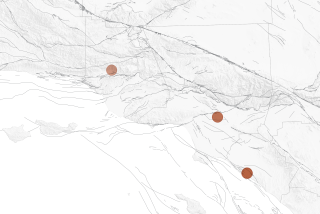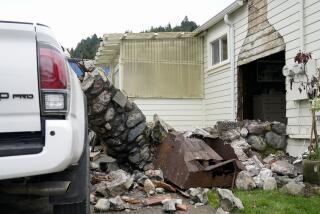$219-Million Grant to Pay for Seismic Research
- Share via
The National Science Foundation awarded $219 million Wednesday for a five-year project to examine national seismicity, with a particular focus on California and other states at tectonic plate boundaries.
A $25-million portion of what is called the EarthScope project will go to drill a 2 1/2-mile-deep borehole into the San Andreas fault near Parkfield in Central California.
The San Andreas fault for hundreds of miles marks the boundary between the Pacific and North American tectonic plates, with the left-hand side (Los Angeles) moving slowly north and the right-hand side (San Francisco) moving south.
According to widely accepted scientific theory, separate parts of the Earth’s surface, or tectonic plates, slowly move in relation to one another, shaping the positions of oceans and land masses.
In Parkfield, a shallower borehole has already been drilled beside the San Andreas in an experiment directed by scientists from Stanford University and the U.S. Geological Survey to better understand how earthquakes occur. Parkfield is a good place for such experiments because quakes are frequent there.
Greg van der Vink, director of the EarthScope project, said Wednesday that $100 million of the National Science Foundation grant would go to developing 850 plate boundary observation stations between the Rockies and the Pacific Coast.
Nearly $100 million more will go to establish a network of 400 seismometers and global positioning stations across the country that will be moved periodically to a total of 2,000 sites, Van der Vink said.
In the years of observations from these stations, it ought to be possible to delineate fault structure under the surface almost nationwide, he said.
The EarthScope project has already taken 10 years to draft in detail and secure funding. Van der Vink called it “the largest project in the history of solid earth geoscience.”
More to Read
Sign up for Essential California
The most important California stories and recommendations in your inbox every morning.
You may occasionally receive promotional content from the Los Angeles Times.













